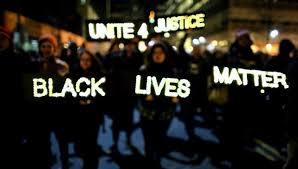Evert once in a while (should be continuously) we need to reevaluate our assumptions, our prejudices, what we assume to be fact. People, and groups we are not a member of or don’t often interact with, develop a story, a characterization in our heads, that we begin to assume is reality. Subsequently, we are shocked and defensive when that reality is questioned. Today’s political divide screams with examples. Opportunities to openly meet, listen to and really see those that are different are infrequent, but invaluable, ways nourish our stories with a small semblance of truth, if we will only try.
In our family relations, psychology teaches us that we should listen more, avoid preconceptions and the rush to judge. Likewise in racial relations, but here it seems even more difficult as the interactions can, by nature, be infrequent, if not completely avoided. For many, today’s racial tensions have us retreating to and reinforcing assumptions and preconceptions when we should be reaching out to learn and understand more about the lives of those we don’t know, much less understand. The “Black Lives Matter” movement is a powerful example of this in our politics. Our family priest shared a story recently that, in a simple greeting, exemplifies this idea of trying harder to actually “see” people. Evidently with the isiZulu (of South Africa), traditionally, when you meet someone, you greet that person saying “sawubona” which means “I see you”. The other person would then say “Yebo, sawubona” meaning “Yes, I see you”. I may not be conveying this totally accurately, but regardless the literal sense is powerful. We all need to put much more effort into seeing and listening to people who are different.
Long before America elected it’s first black president, congress approved funding and began development of a new Smithsonian museum, the National Museum of Africa American History and Culture. By remarkable coincidence it has recently opened and Barack Obama was able to participate in it’s inauguration, at the same time his presidency approaches it’s sunset. The process hasn’t been all roses however, as the story by NMAAHC’s first leader, Lonnie G. Bunch II tells us how when he reported for work he literally had to break into his new temporary offices at the Smithsonian (Making A Way Out of No Way). Now that it is open, the NMAAHC will provide an additional way for all of us to better understand some of what the black experience has been like, as well as the many contributions black lives have made to our collective American heritage. I was in DC just before the opening, but timing was just off. It will undoubtedly be a fantastic way to see, listen and learn more about the African American experience in American history. It is well worth a visit and there will also be ways to view parts of it online.
In the meantime, the September 2016 issue of the Smithsonian magazine was dedicated to African American History and Culture. Look for and pick up a copy and read it. This is something we can all do. It is a way to see, listen to and absorb some of what we would not otherwise experience, much less be able to relate to. It is a way to force our minds to reevaluate preconceived stories we are oblivious to. Check it out. Below are links to several individual articles you can read from here, but try to get a copy and read the entire magazine. It is worth your time and you may feel you somewhat understand what it means when you hear someone say “sawubona”. Maybe you can even reply, “Yebo, sawubona”.
Some of the articles from September 2016 issue of the Smithsonian magazine:
- The Road to Freedom, by Isabel Wilkerson
“Between 1910 and the 1970″s, six million African-Americans fled the south in an epic migration with ripple effects that are still being felt today.” - Objects of Power, photographs by Wendel A. White
“Leading black voices reflect on compelling historical artifacts at the new museum of African American History and Culture.” - Hell and High Water, by Richard Grant
“An archaeologist working deep in the Great Dismal Swamp believes he has discovered the site of a storied community of runaway slaves.”
An archeologist working deep in the Great - Black and Blues, by Tourê
“Is blues music becoming a thing of the past? A festival in Memphis featuring musicians of all ages and nationalities shouts an upbeat answer.“
